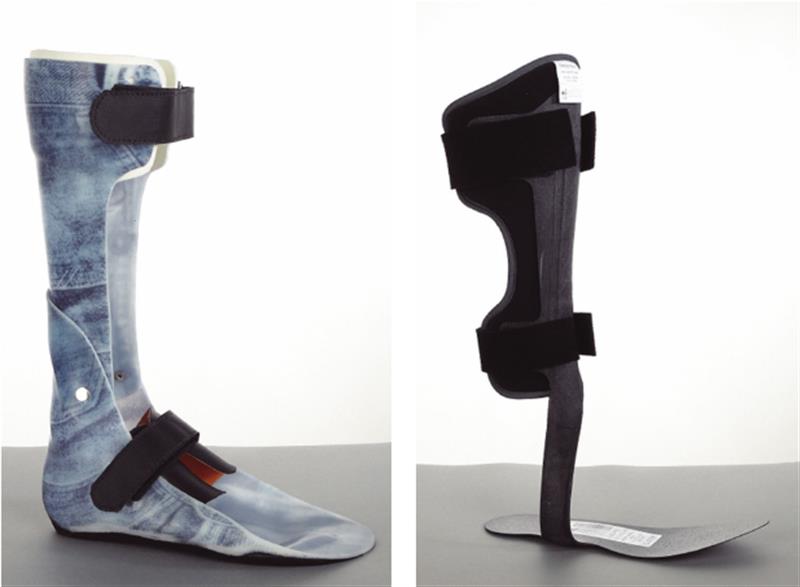
By supporting weak muscles, an AFO helps patients walk more naturally by lowering, stopping, or restricting the movement of their lower legs and feet. They support the preservation of joint alignment, allow for deformity, and lessen spasticity.
When worn with shoes and stockings, an AFO stretches from the top of the calf above the ankle. Just above the ankle, it is tied at the lower thigh. When a patient may gain functional benefit from using the device and has weakness or deformity of the foot or ankle, the device may be deemed medically required.
AFOs are most effective for treating patients who have conditions like:
- Front-foot flexion (upward motion)
- A plantar fasciitis (downward movement)
- Eversion as well as inversion (turning inward or outward)
- Spastic diplegia as a result of CP
- Due to poliomyelitis, lower motor neuron impairment exists.
- Hemiplegic spasticity with cerebral infarction
- Diabetic nerve damage
- Low step (commonly caused by ALS, multiple sclerosis, cerebral palsy)
- Ankle/foot contracture (unable to lift the top of the foot)
AFOs help with pain management, injury protection, and heel, ankle, or foot healing that is safe and pleasant.
What to consider About When Selecting an AFO
The fact that AFOs are adaptable enough to help with a variety of problems is one of the main reasons they are an important component of lower extremity therapy. Because of their adaptability, AFOs are available in a variety of styles for doctors and patients to choose from.
AFOs come in a variety of sizes, shapes, strengths, and formats. Although difficult, finding the ideal AFO for your patient's needs is not impossible. When selecting an AFO that is most suited for therapy, we work with healthcare professionals to give them with resources and information that enable them to make the most informed choices possible.
The following are some important factors to take into account while choosing an ankle brace:
1. Injury
We need to identify whether a person's discomfort or immobility is the result of an injury or a pathology. Injury-based pain refers to the pain that an otherwise healthy individual has as a result of an injury that limits their mobility or makes walking uncomfortable. The type of ankle brace chosen may also depend on the severity of the injury and the level of discomfort or immobility the patient is experiencing as a result of the injury.
2. Pathology
The second reason patients might need an ankle brace is pathology, or when the discomfort or immobility in the ankle is brought on by a medical condition. Patients with pathologies such as stroke, cerebral palsy, Charcot-Marie-Tooth disease (CMT), and posterior tibial tendon dysfunction (PTTD), to name a few, may require ankle braces. In these situations, a thorough neuromuscular and biomechanical evaluation will be necessary to choose the right kind of ankle bracing.
3. How will you utilize the brace?
How the ankle brace will be worn is another consideration we make when selecting one for a patient.We take into account the patient's lifestyle and expectations for the ankle brace, including the activities for which the brace will be utilised. For instance, if the patient wishes to engage in specific sports, this will influence our choice of the ideal design for that particular application.
We must also think about what we want the ankle brace to accomplish. You can have more motion, less motion, compression, overall stability, and pain prevention using ankle braces.
4. Personalized gadgets
We normally use a specially-measured gadget for individuals who have just suffered an injury. Standard sizes of custom-measured items can be altered to meet your body and your medical requirements. They may be ready sooner than a custom solution because they are often off-the-shelf.
5. Gadgets manufactured to order
We normally advise using custom-made equipment for our patients who have pathology-related requirements. A 3-D positive model of the affected body portion is needed to create custom braces. Either a cast or a high-resolution optical scan is used to achieve this. We will design the device in CAD using the precise details and measurements from the 3D positive model, and then we will manufacture the brace in our on-site lab. To make sure your personalised ankle brace fits well, you must schedule a fitting session at our clinics. We'll set up a second fitting session with you after that. Our specialised equipment is produced locally in our lab and is simple and quickly adjustable.
Here are some crucial guidelines to bear in mind while choosing the ideal AFO for your patient:
1. Size and Form
When purchasing an AFO, size and shape are important, much like when buying shoes or apparel. They come in a variety of formats. Some are sparse and only partially encircle the foot and ankle. Some are thicker and encircle the entire foot and ankle.
2. Use of Shoes or No Shoes
One of two formats is used by the majority of AFOs. The first format's boot is light and thin, allowing the patient to use it for rehabilitation while wearing a standard walking shoe.
3. Ongoing maintenance and Replacement Parts
Patients who use AFOs do so practically constantly. They must therefore be extremely strong and able to withstand normal wear and tear. However, maintenance will be required for even the best-built AFO.
4. Choosing a Trustworthy Brand
There are numerous AFO producers worldwide. Anatomical Concepts, a market leader in prefabricated and custom-made medical devices for the upper and lower extremities, employs a multidisciplinary approach to therapy, working closely with orthotists, physical therapists, and doctors.